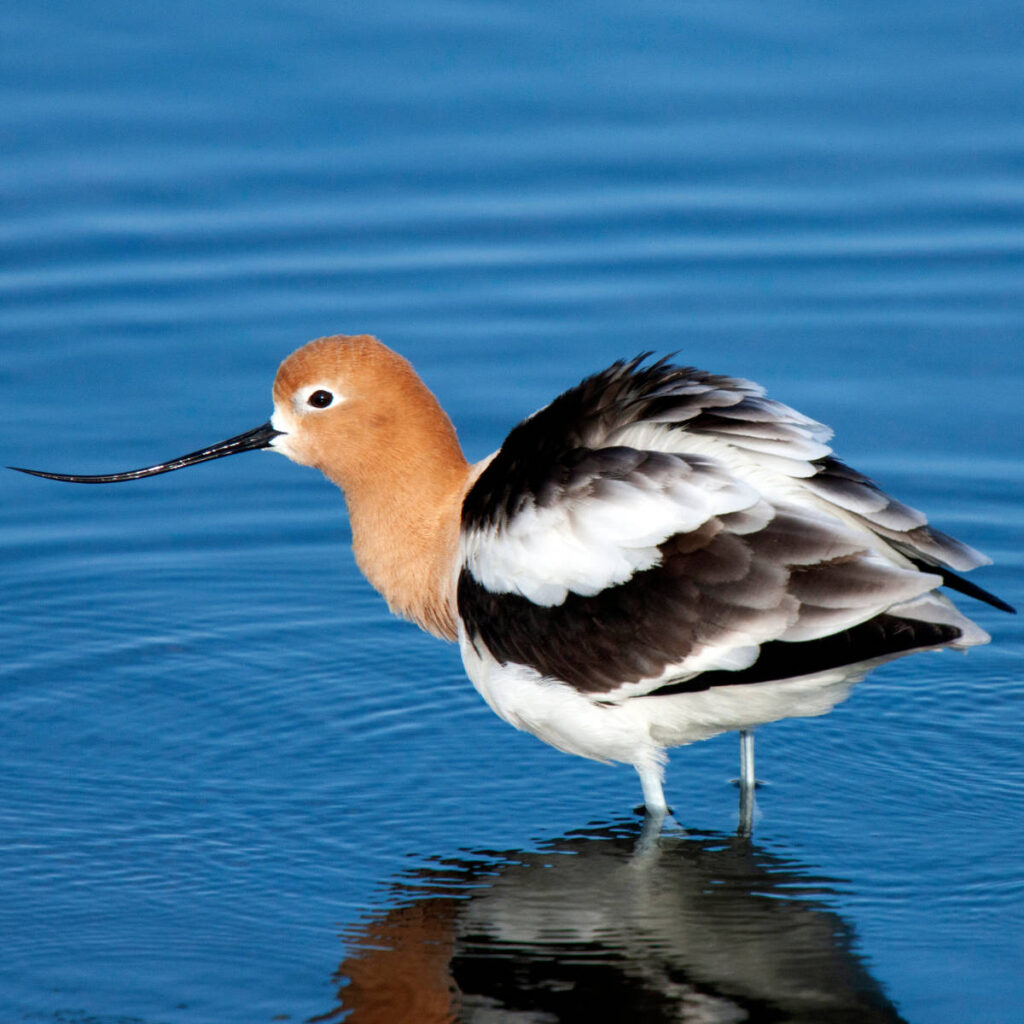Last Reviewed and Updated on November 2, 2022
One of the most gracious birds out there, the avocet, can be found in many places around the globe. They are easy to spot; their black and white (some species with a tint of red) feathers, long legs, and a unique-looking bill make them one of the easiest birds to recognize. Read on and learn some of the coolest facts about the avocet, from their diet to their social behavior.

1. There are four species of avocets
There are four different species of avocets: the American avocet, the Andean avocetm the Pied avocet and the Red-necked avocet.
2. They belong to the genus Recurvicostra, which got its name due the shape of their bills
The name of the genus Recurvicostra comes from the Latin words recurvus, meaning curved backward, and rostrum, which means bill.
3. Avocets have webbed feet
This makes it easy for them to move about in the shallow water as well as makes them good swimmers.
4. Avocets are mostly carnivores
Their diet mostly consists of aquatic insects, small fish and crustaceans. They do ingest some of the plant matter, especially seeds, as well but it is not the focus of their diet.
5. When feeding in muddy water, they sweep their beak side to side
One of the coolest facts about the avocet is the way they pick their food. If the water is clear, they will pick their prey from the surface by sight. If the water is muddy or the visibility is low for any other reason, they will sweep their long beaks side to side through the water to pick up their prey.
6. They live in colonies
These birds like to stick together both when they are nesting and when they are not.
7. They are territorial and will chase off other species of birds
They do like their colonies. If another bird species enters the avocet’s territory, they will most likely chase it away.
8. Avocets nest on the ground
They lay their eggs in nests directly on the ground.
9. They are most known for their long upward curved beak
What sets avocets apart from most other birds is their long thin, and upward-curved beaks. The beak is perfectly designed for hunting, and it’s also effective at defending against predators and chasing away other birds.
10. Male and female avocets look almost the same
There aren’t many visual differences between female and male avocets, so telling them apart can be challenging. The male has a slightly longer beak, and the beak of the female is slightly more upturned than that of a male.
